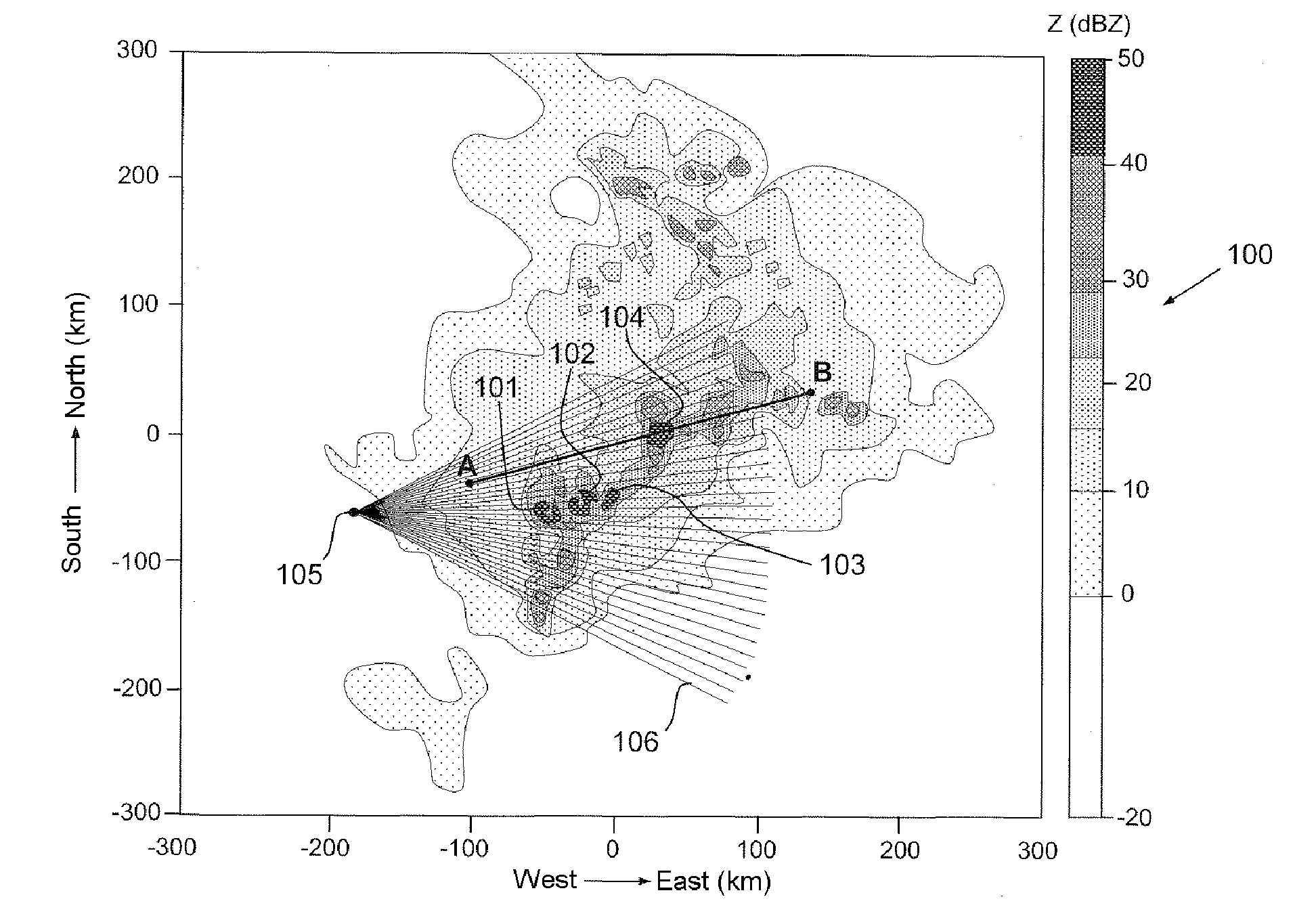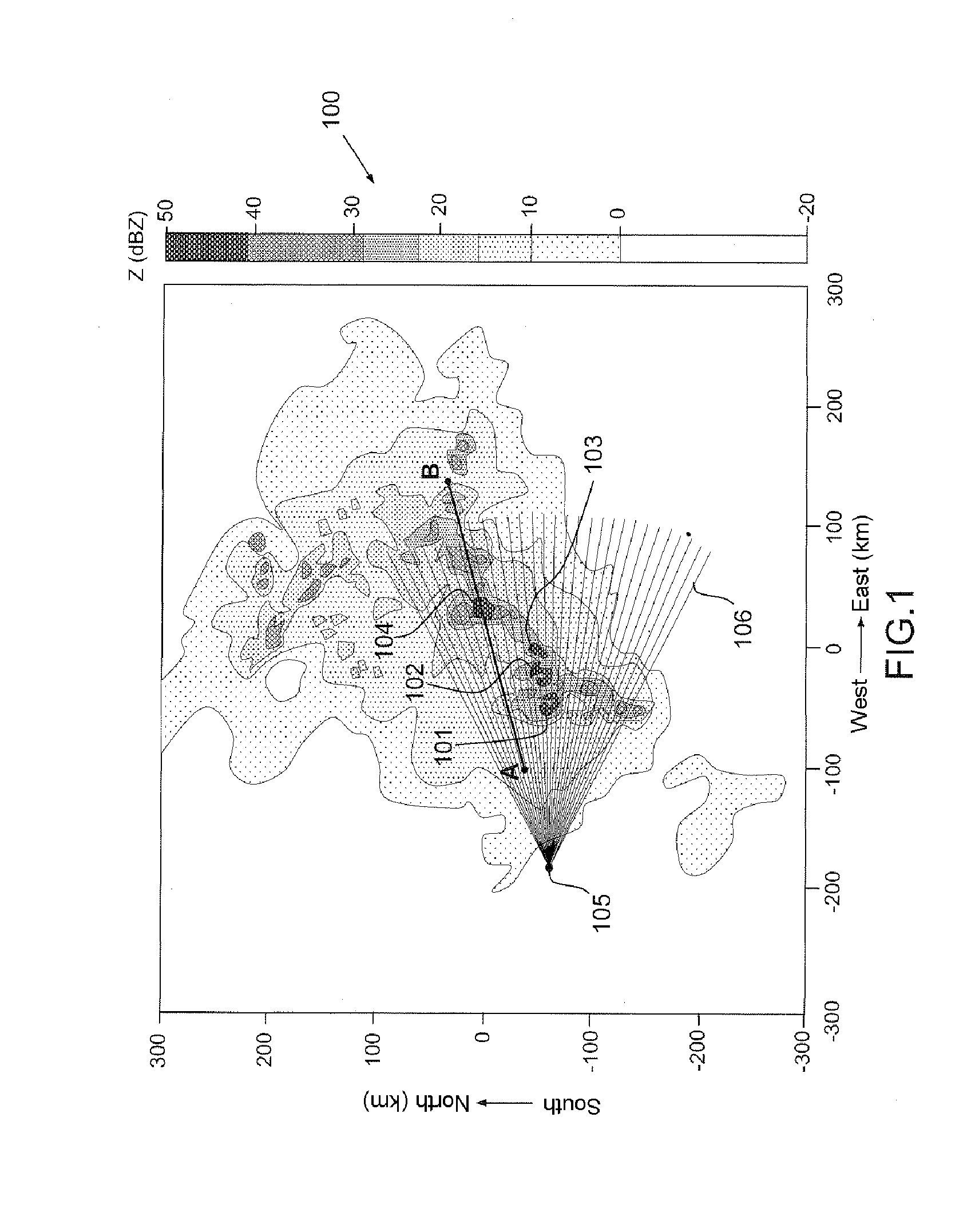Method of correcting reflectivity measurements and radar implementing this method
a reflectivity measurement and radar technology, applied in the direction of instruments, measurement devices, climate sustainability, etc., can solve the problems of non-uniformity, difficult to correct, and undetectable atmospheric gases
- Summary
- Abstract
- Description
- Claims
- Application Information
AI Technical Summary
Benefits of technology
Problems solved by technology
Method used
Image
Examples
Embodiment Construction
[0055]FIG. 1 gives an example of an S band (f=3 GHz) radar image of a squall line extending over around 200 km. A radar image is made up of pixels, each of them being associated with a resolution volume with which a radar measurement is associated. These pixels are usually colored, and their color corresponds for example to a reflectivity level. The colored radar image generated thus makes it possible for the presence of precipitation to be visually discerned. Since FIG. 1 is in black and white, the reflectivity level is not shown in color but according to a gray scale 100, the principle remaining the same.
[0056]The S band is hardly attenuated so that it constitutes a good reference. The presence of convective cells 101, 102, 103, 104 of high reflectivity, greater than 40 dBZ, indicates the possible presence of hail and therefore attests to the hazardousness of this system. An X band radar 105 is positioned on the image. A line 106 corresponds to a radial line, i.e. a line in a dire...
PUM
 Login to View More
Login to View More Abstract
Description
Claims
Application Information
 Login to View More
Login to View More - R&D
- Intellectual Property
- Life Sciences
- Materials
- Tech Scout
- Unparalleled Data Quality
- Higher Quality Content
- 60% Fewer Hallucinations
Browse by: Latest US Patents, China's latest patents, Technical Efficacy Thesaurus, Application Domain, Technology Topic, Popular Technical Reports.
© 2025 PatSnap. All rights reserved.Legal|Privacy policy|Modern Slavery Act Transparency Statement|Sitemap|About US| Contact US: help@patsnap.com



